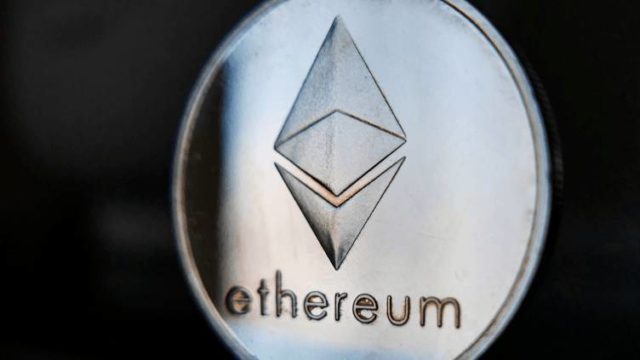- The Mexican peso could recover to the 17.00 zone according to analysts, as the electoral risk moderates.
- Mexico’s high interest rates are likely a driver, as they attract foreign investors seeking returns.
- The USD/MXN continues to retreat amid an uptrend in the short and medium term.
The Mexican Peso (MXN) trades within a tight range on Wednesday as market calm descends and post-election volatility subsides, which saw the Peso sell-off of more than 10% across its key pairs.
Several market analysts now say the Mexican peso will move higher as firm fundamentals and a carry trade advantage offset the damage caused by recent policy-driven volatility.
At the time of writing, a single US Dollar (USD) buys 18.42 Mexican Pesos, EUR/MXN is trading at 19.77 and GBP/MXN at 23.44.
The Mexican peso will regain strength, analysts say
The Mexican Peso is likely to rebound after its deep post-election drop, according to Rabobank analysts, who forecast a rebound in USD/MXN to a base target of 18.10, but possibly even lower, in the next month .
“We see USD/MXN trending back towards the 17.80 region with the potential for a move as low as 17.20 if volatility calms down, although we think a return below 17.00 is unlikely,” he said. the bank in a note on Wednesday.
The Peso still has a large carry advantage over its rivals, says Rabobank, due to high interest rates in Mexico. This factor will likely keep demand relatively high.
“The MXN remains the most attractive carry currency in the world when adjusted for volatility and liquidity, despite the recent increase in volatility,” the note says.
Carry trade is a type of strategy where investors borrow in a currency where interest rates are low, such as the Japanese Yen (approximately 0.0% – 0.1%) and place their money in a currency with a higher interest rate, such as the Peso (approximately 11.00%). The profit in the operation is the difference between what is earned from interest and the cost of borrowing. In the example above, assuming that the Yen does not appreciate against the Peso, the trade would make the investor almost all of the 11.00% interest earned in one year.
Mexican Peso to Rebound as Sell-Off Was Exaggerated, According to Prominent Currency Analyst
Mexico’s relatively high interest rates are also why another analyst, ranked top for his MXN forecasts by Bloomberg, thinks the Mexican peso will rebound after the post-election sell-off.
Bartosz Sawicki, Market Analyst at Polish broker Cinkciarz.pl, thinks that the downward movement after the elections is being “exaggerated” and that the Peso is correcting back to 17.00 in the USD/MXN.
The recovery of the Peso will be driven mainly by the determination of the Bank of Mexico (Banxico) to keep interest rates high. Although the bank cut rates in March from 11.25% to 11.00%, it has been reluctant to follow through with further cuts, and Sawicki thinks this hardline stance “will remain and this will work in favor of the Mexican peso.”
However, the Peso faces considerable long-term risks, according to Sawicki, who sees the US presidential election in November as a “huge risk event.”. If Donald Trump wins, he could undermine trade and immigration agreements between the two nations, leading to a weakening of the Peso. Not only trade, but also remittances from Mexicans working in the US are key components of USD/MXN flows.
Investors are taking their money out of emerging markets
Mexico is not alone when it comes to volatile election results. The financial markets and national currencies of India and South Africa also experienced turbulence after the recent elections. This has led many carry traders to reconsider where they invest, according to Sawicki.
“All of the investors we spoke to in recent days said they might look for other carry trade opportunities in different regions, or they will probably try to wait until the US presidential election in the fourth quarter,” Sawicki said in an interview with BloombergNews.
Technical Analysis: USD/MXN stabilizes after pullback
USD/MXN remains stable after retreating from the high of 18.99 reached on June 12.
Although the correction may have further to go, the short and medium-term trends are now bullish, suggesting that the price will eventually turn around and start rising again. The next upside target is at 19.22 (March 2023 high).
USD/MXN daily chart
A break above Friday’s high at 18.68 would provide additional confirmation of further upside towards the target at 19.22.
The Relative Strength Index (RSI) has just exited the overbought zone, however, it also suggests a risk that the correction could still deepen. That said, the established uptrend is likely to eventually resume.
The direction of the long-term trend remains in doubt after the break above the October 2023 high. Before that, it was bearish.
The Mexican Peso FAQs
The Mexican Peso is the legal tender of Mexico. The MXN is the most traded currency in Latin America and the third most traded on the American continent. The Mexican Peso is the first currency in the world to use the $ sign, prior to the later use of the Dollar. The Mexican Peso or MXN is divided into 100 cents.
Banxico is the Bank of Mexico, the country’s central bank. Created in 1925, it provides the national currency, the MXN, and its priority objective is to preserve its value over time. In addition, the Bank of Mexico manages the country’s international reserves, acts as a lender of last resort to the banks and advises the government economically and financially. Banxico uses the tools and techniques of monetary policy to meet its objective.
When inflation is high, the value of the Mexican Peso (MXN) tends to decrease. This implies an increase in the cost of living for Mexicans that affects their ability to invest and save. At a general level, inflation affects the Mexican economy because Mexico imports a significant amount of final consumption products, such as gas, fuel, food, clothing, etc., and a large amount of production inputs. On the other hand, the higher the inflation and debt, the less attractive the country is for investors.
The exchange rate between the USD and the MXN affects imports and exports between the United States and Mexico, and may affect demand and trade flows. The price of the Dollar against the Mexican Peso is affected by factors such as monetary policy, interest rates, the consumer price index, economic growth and some geopolitical decisions.
The exchange rate between the USD and the MXN affects imports and exports between the United States and Mexico, and may affect demand and trade flows. The price of the Dollar against the Mexican Peso is affected by factors such as monetary policy, interest rates, the consumer price index, economic growth and some geopolitical decisions.
Source: Fx Street
I am Joshua Winder, a senior-level journalist and editor at World Stock Market. I specialize in covering news related to the stock market and economic trends. With more than 8 years of experience in this field, I have become an expert in financial reporting.








